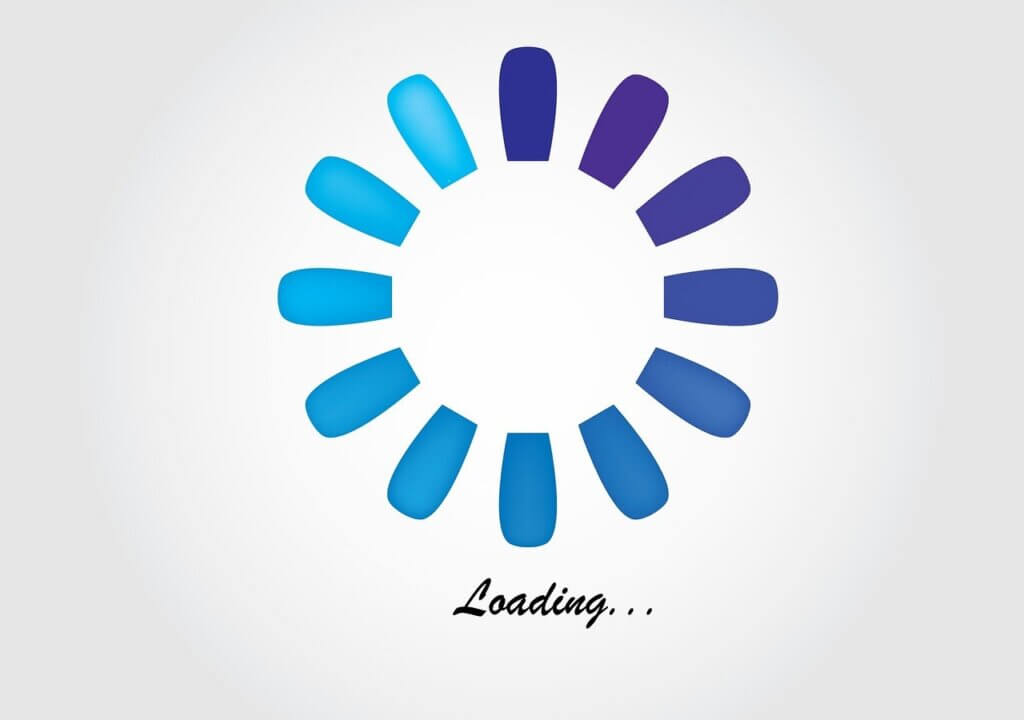After reading this article, you’ll:
- The critical importance of mobile app performance for user retention and satisfaction, including how factors like load times, responsiveness, and resource usage directly impact user experience and business metrics.
- Common causes of poor app performance, such as inefficient code, large file sizes, network issues, and device limitations, along with strategies to address these problems through optimization techniques.
- Specific methods for improving app performance, including optimizing network communication, efficient data storage and retrieval, code optimization, and advanced techniques like server-side optimizations and cloud services, as well as the importance of ongoing performance monitoring and analytics.

Mobile app performance is critical for retaining users. If an app is slow, crashes frequently, or has bugs, users will quickly become frustrated and delete the app. Studies show users will uninstall an app after only one or two negative experiences. On the other hand, apps with fast load times and seamless functionality tend to have much higher user retention rates.
Performance issues directly impact the user experience. Even minor hiccups like longer load times can cause users to perceive an app as low quality. Modern consumers have high expectations when it comes to app performance and responsiveness. Meeting or exceeding these expectations is key for any successful mobile app.
One of the most important performance metrics is load time—that is, how long it takes for an app to start up and display content. Mobile apps with long load times lead to high abandonment rates. It’s clear that optimizing load times is critical for providing a seamless user experience.
The reason load times have such an outsized impact is because mobile app usage frequently happens in short bursts. Users are often trying to retrieve information or complete a simple task as quickly as possible. Even an additional delay of a few seconds causes significant frustration. By optimizing app load times, developers can dramatically improve user satisfaction and retention.
Understanding App Performance
Mobile app performance refers to how fast, smooth, and reliable an app’s functionality and interface are from the user’s perspective. There are three key metrics that determine app performance:
- Load Time: The time it takes for an app to fully launch and display content.
- Responsiveness: How quickly an app reacts to user input and gestures.
- Battery/Data Usage: How efficiently an app uses device resources like battery, storage, and mobile data.
The User’s Perspective: How performance impacts user experience
For users, performance issues can severely degrade the app experience. A slow or buggy app is incredibly frustrating. According to studies, up to 53% of users will uninstall an app after just one crash, freeze, or error. Users expect mobile apps to have seamless responsiveness, minimal load times, and efficient usage of device resources.
The Business Impact: Connecting performance to user retention and ROI
By directly impacting user experience, app performance has a major influence on retention, engagement metrics, and ROI:
- Nearly 70% of users say load times affect their willingness to purchase from ecommerce apps.
- Apps with long load times have much higher immediate uninstall rates.
- Well-optimized apps keep users engaged for longer and lead to higher conversion rates.
App performance is critical for acquiring, engaging, and retaining active users—making optimization vital for healthy customer lifetime value and ROI. Paying close attention to key metrics can help developers identify and fix performance bottlenecks.
Common Causes of Slow App Performance
 There are a variety of technical issues that can negatively impact mobile app performance. Identifying the root causes of performance problems is key for developers looking to speed up their apps. Some of the most common causes include:
There are a variety of technical issues that can negatively impact mobile app performance. Identifying the root causes of performance problems is key for developers looking to speed up their apps. Some of the most common causes include:
Inefficient Code
Poorly written code often leads apps to consume excessive device resources. Inefficiencies like endless loops, memory leaks, and frequent garbage collection can manifest as laggy or unresponsive apps. Optimizing algorithms and data structures is crucial.
Large File Sizes
Apps with very large file sizes often have long load times and are slow to install. Bloated apps also take up valuable storage space on user devices. Minifying code, compressing images, and removing unused resources are some optimization best practices.
Network-Related Issues
Factors like weak cellular signal, bandwidth limits, and spotty Wi-Fi connectivity can degrade app performance. Latency from network requests can also bottleneck response times. Strategies like data compression, caching, and background loading help overcome network-related problems.
Device Limitations
Resource constraints on mobile devices, like low memory, weak processors, and limited battery capacity, can also affect app performance. Efficient memory management, multi-threading, and eliminating unnecessary resource usage are some ways around device limitations.
There are a wide variety of technical and environmental factors that cause apps to deliver a subpar user experience. By carefully analyzing performance issues and targeting optimization efforts, developers can significantly improve app speeds and responsiveness.
Optimizing Network Communication
The network stack plays a vital role in overall mobile app performance. Network requests often introduce latency that causes delays in app responsiveness. Apps should aim to optimize network communication through the following techniques:
Minimizing Network Requests
Eliminating unnecessary or redundant network calls can significantly speed up response times. Developers should design apps to avoid making too many remote requests for data loading and processing tasks.
Implementing Caching Strategies
Caching frequently accessed data locally and reusing when possible avoids additional network overhead. Effective cache invalidation also ensures users see updated content.
Using Efficient Data Formats
Lightweight data formats like JSON and Protocol Buffers greatly reduce payload sizes compared to XML. This means faster transmission times and lower bandwidth usage.
Compression Techniques
Gzip and other compression schemes minimize the amount of data transferred over the network. Decompressing content on a device is generally less resource-intensive.
Asynchronous and Background Processing
 Performing non-critical network tasks in the background frees up the main UI thread. Async request handling also allows parallel data fetching. This improves overall responsiveness.
Performing non-critical network tasks in the background frees up the main UI thread. Async request handling also allows parallel data fetching. This improves overall responsiveness.
Network optimization is key for delivering smooth and snappy mobile app performance. Techniques like request minimization, caching, efficient data formats, and async processing help apps use the network stack more efficiently.
Efficient Data Storage and Retrieval
Optimizing data access patterns and storage solutions is imperative for smooth app performance. Apps should aim to efficiently load and cache the minimal required data in memory. Some key techniques include:
Choosing the Right Database Solution
Selecting the appropriate persistent storage technology like SQLite, Realm, or Firebase based on data access patterns and structure. This avoids suboptimal read/write speeds.
Indexing and Query Optimization
Database indexing, covering queries, and query planning ensure fast data lookup and retrieval times, even for large datasets.
Lazy Loading and Pagination
Lazy load mechanisms only fetch the data that needs to be immediately displayed rather than everything upfront. Pagination also helps avoid loading hundreds of records.
Data Normalization and Denormalization
Finding the right level of normalization to facilitate simple queries while avoiding expensive join operations.
Memory Caching and Persistence
Caching frequently accessed data in memory reduces retrieval latency. Persistence ensures cache consistency across app restarts.
Choosing the right storage technology and optimizing data querying and caching mechanisms is crucial for snappy data loading. Developers should analyze access patterns and tweak database schemas to best suit the use case.
Code Optimization Techniques
The code that powers app functionality can also introduce major performance bottlenecks. Developers should analyze and refactor code to avoid inefficient programming practices that waste device resources. Some key areas to focus on include:
Algorithms and Data Structures
Using optimal algorithms and data structures suited for the task at hand minimizes processing time. Examples include sorting, searching, compression, and mathematical algorithms.
Multithreading and Concurrency
Performing independent tasks concurrently on separate threads increases processing efficiency. Targeting dual/quad-core mobile CPU architectures speeds up apps.
Memory Management and Garbage Collection
Minimizing memory usage and frequent garbage collection pauses that degrade UX. Techniques involve object pooling, in-place array updates, and eliminating leaks.
Rendering and Graphics Optimization
Optimized rendering pipeline, sprite sheets, and texture atlases help complex UI graphics render smoothly at 60 FPS. Reduces battery drain.
Avoid Unnecessary Computations
Good programming practices like caching interim results, avoiding repeated calculations, and simplifying expressions where possible significantly improves performance.
Writing optimized code enhances app responsiveness and elevates the overall user experience. Profiling tools help developers identify and target inefficient code segments for maximum gains.
Advanced Techniques for Performance Enhancement
In addition to client-side optimization, developers can leverage some advanced techniques to further improve app performance:
Server-Side Optimizations
Optimizing backend infrastructure and databases, content delivery networks, and server caching enables faster data transmission and reduced API response times.
Utilizing Cloud Services
Leveraging cloud capabilities allows heavy processing to be offloaded from the mobile device to boost responsiveness. Cloud also enables real-time analytics.
Implementing App Thinning
App Thinning builds optimized app binaries for each target device variant. This avoids shipping unnecessary code to older devices with less capacity.
These additional optimization strategies enhance the app experience by reducing network latency as well as freeing up client-side resources. While native code optimizations remain essential, a holistic approach covers all bases for lag-free apps. The cloud in particular helps overcome mobile hardware constraints to enable smoother performance.
By combining a mix of client, server, and cloud level performance tuning, developers can take mobile app optimization to the next level. This maximizes speed, stability and overall user experience.
Tools and Techniques for Monitoring Performance
Continuously monitoring app performance metrics and user behavior provides actionable data to guide optimization efforts. Developers have several approaches for gathering analytics:
Performance Monitoring Tools
Services like Firebase Performance Monitoring, New Relic, and AppDynamics provide out-of-the-box SDKs to capture detailed metrics on load times, network requests, and crashes. The dashboard reveals optimization opportunities.
Profiling and Benchmarking
In-depth profiling examines CPU, memory, and network usage patterns in real-world scenarios. Benchmarking compares app metrics against industry standards for that device category and operating system.
Real-time Analytics
Analyzing metrics in real-time allows developers to detect problems as they emerge after an app update or server-side change. Performance monitoring services make key usage metrics accessible through online dashboards.
By leveraging a combination of tools and techniques to unlock a data-driven view of app performance, developers can continuously tune and enhance the user experience. As devices and operating systems advance, so do user expectations—making performance optimization a perpetual task.
Frequently Asked Questions (FAQs) on Optimizing App Performance and Reducing Loading Times
Why is mobile app performance so important?
Mobile app performance is critical because it directly impacts user retention and satisfaction. Poor performance, such as slow load times or frequent crashes, can lead to high uninstall rates and negative user experiences. Studies show that users often uninstall apps after just one or two negative experiences, making performance optimization crucial for app success.
What are the key metrics for measuring mobile app performance?
The three key metrics for measuring mobile app performance are:
- Load Time: How long it takes for the app to launch and display content.
- Responsiveness: How quickly the app reacts to user input and gestures.
- Battery/Data Usage: How efficiently the app uses device resources like battery, storage, and mobile data.
What are some common causes of slow app performance?
Common causes of slow app performance include:
- Inefficient code
- Large file sizes
- Network-related issues
- Device limitations These factors can lead to laggy or unresponsive apps, long load times, and excessive resource consumption.
How can developers optimize network communication in mobile apps?
Developers can optimize network communication by:
- Minimizing network requests
- Implementing effective caching strategies
- Using efficient data formats like JSON
- Applying compression techniques
- Utilizing asynchronous and background processing
What tools can be used to monitor app performance?
Developers can use various tools and techniques to monitor app performance, including:
- Performance monitoring tools like Firebase Performance Monitoring, New Relic, and AppDynamics
- Profiling and benchmarking techniques to examine CPU, memory, and network usage
- Real-time analytics to detect problems as they emerge These tools provide actionable data to guide optimization efforts and continuously improve user experience.





